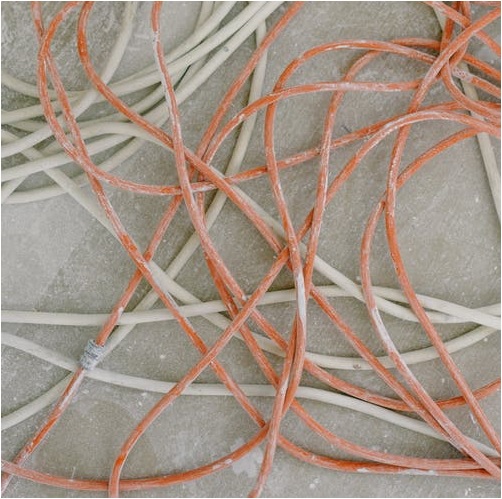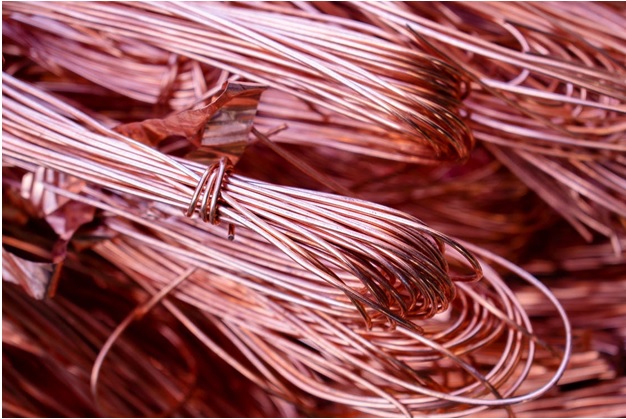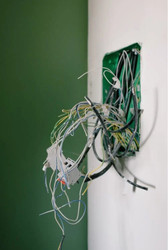A Short Guide to the Different Types of Electric Wire and Cable Insulation
27th May 2022
There are all different sorts of electric wires and cables: marine battery cable, flexible welding cable, instrumentation and fire alarm cable, building wire, tray cable, and so much more.
There is also a wide range of electric wire and cable insulation materials - in fact, probably just as many as there are types of wire and cable themselves.
Hopefully, this short guide helps you understand the types and functions of electric wire and cable insulation better - and if you need more guidance, you can always call us directly.
Why Do Electric Wire and Cable Need Insulation?
There are many different reasons why electrical conductors need high-quality insulation. One is to protect the conductors themselves from external interference. Other competing electrical signals can scramble or incapacitate the transmissions from fire alarm cables or from instrumentation systems’ cables, for instance.
Electric wire also needs insulation to protect the conductor against “accidental discharge” or “electrical leakage.” Wires and cables that unintentionally allow discharge of their electrical potential lose money - which is problematic not only for utility companies but for those on the receiving end who actually rely on power output.
Also, electrical wire and cable are insulated as a protective measure. The insulation serves as a barrier between the wire and cable and the external environment. In that way, electrical conductor insulation is a safety-enhancing measure, protecting against the risk of electric shock.
What Are the Different Types of Electric Wire and Cable Insulation
●Polyvinyl chloride (A.K.A. PVC): PVC is one of the most widely produced plastics in the world, and consequently it is commonly used as an electrical insulator. PVC is common as an electrical insulator because it is flexible, durable, and cost-effective. It is also rated for use in a relatively wide range of temperatures. Combining PVC with different plasticizers can alter its rigidity and strength, making it even more widely versatile. PVC offers good to excellent resistance against sunlight, heat, oxidation, acids and alkalines, flames, and ozone.
●Polyethylene: Polyethylene insulation, also known as PE, is the most widely produced thermoplastic in the world. It has low dielectric properties and capacitance and offers excellent low-temperature flexibility as well as excellent resistance to sunlight, oxidation, abrasion, acids, and alkalines.
●Polypropylene: Polypropylene insulation, also known as PP, is also a thermoplastic. It is useful under a wide range of temperatures (from well below 0℉ to over 200℉) and is non-polar but is less flexible than PE. PP insulation is highly suitable for underground burial and offers excellent resistance to sunlight, ozone, acids and bases, heat, oxidation, water, and alcohol, making it suitable for use in wet locations.
●Nylon: Nylon insulation is a highly flexible synthetic material that is commonly used as an electrical insulator due to its exceptional flexibility and resistance to abrasion and chemicals. Nylon is extremely resistant to oxidation, heat, sunlight, oil, and alkaline substances. However, nylon offers poor resistance to acids, alcohol, water intrusion/permeability, and flames. It is also not suitable for underground burial and is better suited to use in dry locations.
●Thermoplastic rubber: Also known as TPR insulation, thermoplastic rubber is a combination of rubber and plasticizers that offers a fair mix of flexibility and durability. It is resistant to heat, weather, and aging and is suitable for fairly harsh environments.
●Ethylene propylene rubber (EPR): EPR insulation is a synthetic elastomer that is chemically similar to EPDM, or ethylene diene monomer insulation, that is renowned for its resistance to sunlight and weather. Like EPDM, EPR is suitable at a wide range of temperatures and is highly durable in most environments.
●Thermoplastic elastomers (TPE): TPE insulators are a class of electric wire and cable insulators that offer a wide operating temperature range and are highly resistant to UV and fire while remaining fairly flexible.
●Fluorinated ethylene propylene (FEP): Fluorinated ethylene propylene has an extremely wide temperature range, from under -100℉ to over 392℉. It is also very resistant to chemicals and offers excellent electrical properties. FEP Teflon insulation offers outstanding resistance to oxidation, sunlight, oil, heat, and fire, and excellent resistance to acids, alkaline, water, alcohol, abrasion, and ozone. Moreover, it is one of the few electrical insulators that offers excellent resistance to aliphatic and halogenated hydrocarbons. The only real weakness of FEP insulation is nuclear radiation - although, very few insulators are suitable to use in the presence of radiation, anyway.

●Polytetrafluoroethylene, or PTFE: Polytetrafluoroethylene insulation is a fluoropolymer that is suitable for use in a wide range of temperatures and which offers very high resistance to flames, UV and chemicals while remaining very flexible, even at low temperatures. In fact, PTFE offers excellent to outstanding resistance to acids and alkalines, water, oil, alcohol, a wide range of hydrocarbons, ozone, abrasion, oxidation, and much more. Like FEP, its only drawback is poor suitability in the presence of nuclear radiation.
●Polyurethane (PUR): Polyurethane insulation is a tough polymer that remains flexible at low temperatures and is fairly cost-effective to produce and use. While it is flammable and has poor electrical properties, it is highly resistant to oxidation, ozone, oil, and alcohol, so it is sometimes used in low voltage settings.
Bare Copper Ground Wire: Why Is It Not Insulated?
You may be familiar with ground wires, which are sometimes marked by their green insulation. However, as often as not, ground wires are left as bare copper.
How can this be, if insulation protects both the wire and the environment from incidental and accidental discharge?

One reason is that the NEC requires it: in fact, the National Electrical Code (NEC) requires ground wires either to be bare or insulated with a color-coded green or green-yellow insulation.
However, the other reason that ground wires are uninsulated is that there is no good justification for insulating them. Ground wires almost never carry a current. In fact, the only time they carry a current is in the event of a surge or short. As long as you are not in contact with a ground wire, there is no cause for concern.
One more reason that ground wires are rarely insulated is that insulation adds an extra step in the manufacturing process and increases the expense of the conductors. So, you can save money simply by not using insulated ground wires - not to mention they almost never carry a current anyway.
Questions? Contact Us!
Have a specific question about electrical insulation or electrical wire and cables that we haven’t answered in this post? Get in touch with us at 800-262-1598 or at Sales@EWCSWire.com and we’ll be more than happy to help!

